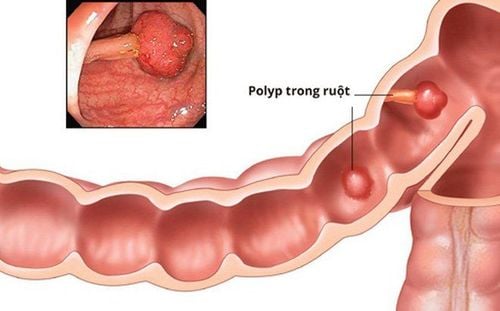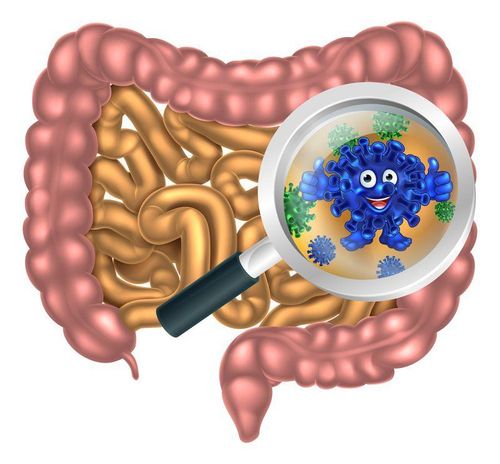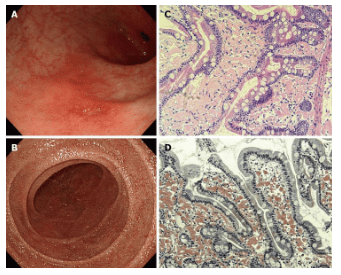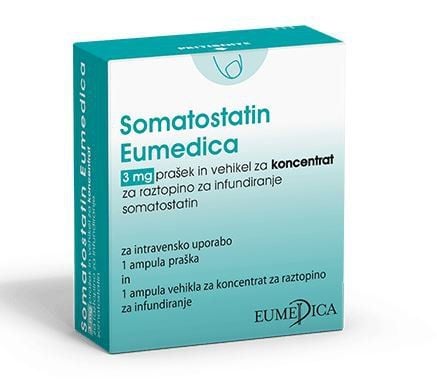This is an automatically translated article.
Posted by Master, Doctor Mai Vien Phuong - Department of Examination & Internal Medicine - Vinmec Central Park International General Hospital
Amyloidosis, a heterogeneous group of disorders, is characterized by the extracellular deposition of autologous, insoluble, fibrous proteins that are misfolded. These extracellular proteins are deposited in tissues, aggregate into symmetrically arranged pleated sheets, and cause distortions in tissue structure and function.
1. Overview
In the current literature, about 60 heterogeneous amyloidogenic proteins have been identified, of which 27 are implicated in human disease. Classified as a rare disease, amyloidosis is known to have a wide range of possible clinical causes and manifestations. The exact prevalence and prevalence of the disease is currently unknown. In both systemic and localized amyloidosis, there is infiltration of abnormal proteins in the layers of the gastrointestinal tract (gastrointestinal tract) or liver parenchyma.
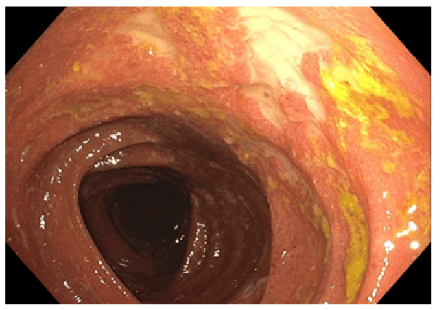
The gold standard test to confirm the diagnosis is tissue biopsy followed by Congo red staining and apple green birefringence of Congo red residue stained under polarized light. However, not all patients can have tissue-positive disease confirmation. In these cases, you may need to work overtime and refer to a gastroenterologist. Along with symptom management, the management of gastrointestinal amyloidosis includes local observation or surgical resection in patients with atopic disease and treatment of the underlying pathology in cases of systemic amyloidosis. In this literature review, we describe the subtypes of amyloidosis, with a primary focus on the epidemiology, pathogenesis, clinical features, diagnosis, and treatment strategies available for gastrointestinal amyloidosis. chemical.
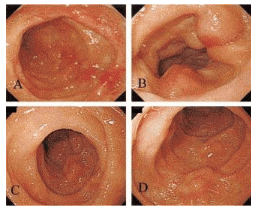
2. Classification
Based on the site of amyloidogenic precursor protein production and its deposition in models, it can be classified into two dependent categories: systemic and focal amyloidosis. Gastrointestinal involvement may be a feature of both subtypes. Systemic amyloidosis is more common than focal disease, and the annual incidence of primary systemic amyloidosis is 78% while the incidence of secondary systemic amyloidosis is only 6% annually in the United States. In the literature, about 60 amyloidogenic proteins have not been uniformly identified, of which 27 are associated with known disease.
Gastrointestinal (gastrointestinal) amyloidosis is defined as the presence of gastrointestinal signs and certifications similar to the direct bioequivalence of the disease. However, according to the literature Currently, demonstrating gastrointestinal amyloidosis with bioassay work directly from the GI tract can be a rare phenomenon.
Pathophysiology: The underlying pathogenic mechanism of amyloidosis involves extracellular deposition of insoluble protein filaments derived from amyloid precursor proteins in tissues. They are composed of low-molecular-weight subunits arranged in symmetrical ß sheets. In gastrointestinal amyloidosis, infiltration of extracellularly folded proteins can be seen in different layers of the gastrointestinal tract.
Mucosal infiltration:
The most common site of mucosal infiltration is the duodenum, followed by the stomach, colorectal and esophagus. Furthermore, the subtype of deposited amyloid proteins governs clinical presentation. Light-chain amyloid deposition is commonly found in the muscular mucosa, submucosa, and muscularis stroma, often resulting in the formation of protrusions. It may present with symptoms of intestinal obstruction. Amyloid AA deposition is mainly seen in the mucosa, which can lead to increased friability and erosion in the involved area. It may present with diarrhea and clinical features of malabsorption. β2-microglobulin amyloid (Aβ 2 M) deposition is commonly seen in hemodialysis patients and corresponds to an increased mean time on dialysis. Aβ 2 M deposition can be seen in the blood vessels of the gastrointestinal tract, mucosa, submucosa, and muscularis stroma. It may present with features of mucosal ulceration.
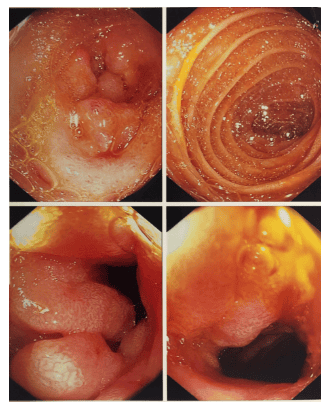
Neuromuscular infiltration:
It is characterized by the deposition of amyloid proteins in the neuromuscular layer of the gastrointestinal tract. This can affect the intrinsic (neuromuscular or submucosal plexus) and extrinsic (vertical and circular) plexus leading to abnormal peristalsis, abnormal gastrointestinal transit time. and movement disorders. Hepatic amyloidosis, a manifestation of systemic amyloidosis, has a similar pathogenesis and is characterized by extracellular deposition of fibrous amyloid (AL) proteins in the liver parenchyma. This presents a diagnostic challenge because it shares many clinical manifestations with other common chronic liver diseases and has a poor prognosis, especially in patients with jaundice.
3. Clinical manifestations
The clinical presentation of gastrointestinal amyloidosis depends on the amount and location of amyloid deposition, irrespective of whether it is primary or secondary systemic amyloidosis. Patients with focal amyloidosis may have the same clinical features as those with systemic disease. All patients with amyloidosis shared symptoms such as fatigue, lightheadedness, anorexia, and balance.
Possible gastrointestinal abnormalities usually include.
Gastrointestinal bleeding
Can occur from any site of amyloid deposition and may be present in 57% of patients. The underlying cause is usually mucosal injury (amyloidoma, erosion, polypoid lesion, hematoma or submucosal hemorrhage), vascular fibrosis, or in some cases intestinal ischemia. Massive occult bleeding from the gastrointestinal tract is commonly seen with dialysis-associated amyloidosis Malabsorption
May present with symptoms such as diarrhea, weight loss, lipodystrophy, anorexia, or dizziness and is often is secondary to mucosal infiltrates, pancreatic insufficiency, or bacterial overgrowth
Proteolytic gastropathy
Specific gastrointestinal manifestations include diarrhea, edema, and ascites. This is secondary to mucosal lesions that can lead to abnormal protein loss from the gastrointestinal tract.
Chronic digestive dysfunction (stagnation syndrome)
May present with nausea, vomiting, dysphagia, gastroparesis, gastro-oesophageal reflux, anorexia, constipation, abdominal pain, abdominal distention or clinical features of chronic intestinal obstruction. The dysfunction may be secondary to muscle and nerve dysfunction. Some patients may experience persistent diarrhea due to rapid transit times secondary to dysfunction, enteritis, and bacterial overgrowth.
Hepatic amyloidosis
No clinical significance in most patients due to mild clinical presentation. Hepatomegaly and mild elevation of alkaline phosphatase (ALP) were the most frequent findings. Other symptoms included weight loss (72%), fatigue (60%), abdominal discomfort (53%) and loss of appetite (26%). Elevated direct serum bilirubin levels (>2 mg/dL) are often associated with a poor prognosis. Uncommon Symptoms Some patients with gastrointestinal amyloidosis may have features of cholangitis, intestinal infection (air sacs in the intestinal wall), or bowel perforation. The clinical findings in patients with amyloidosis depend on the entry of abnormal proteins into the specific organ. However, from a purely gastrointestinal point of view, physical examination can detect macroglossia (enlarged tongue) in up to 50% of cases. On abdominal examination, hepatosplenomegaly and ascites may be the most frequent findings.
Please dial HOTLINE for more information or register for an appointment HERE. Download MyVinmec app to make appointments faster and to manage your bookings easily.






